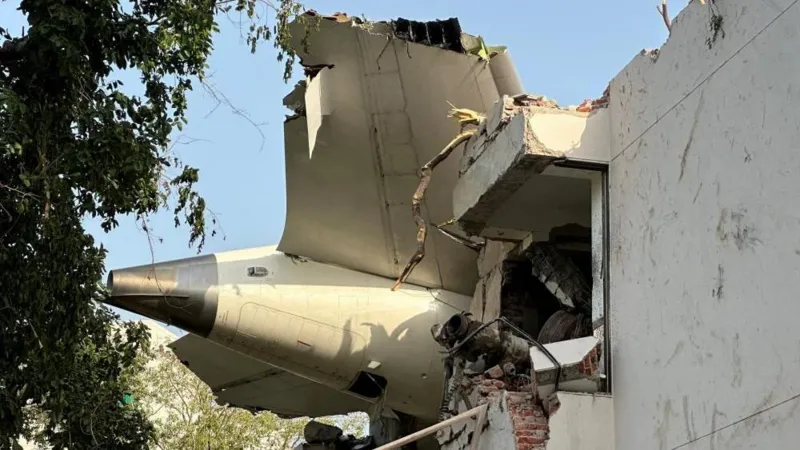
Posted on 07/12/2025 5:16:46 AM PDT by jerod

Fuel to the engines of the Air India plane involved in a deadly crash was cut off moments after take-off, a preliminary investigation report has found.
In recovered cockpit voice recordings, the report said one of the pilots can be heard asking "why did you cut off?" - to which the other pilot replied he "did not do so".
The London-bound Boeing 787-8 Dreamliner crashed less than a minute after taking off on 12 June from Ahmedabad airport in western India, killing 260 people, most of them passengers. One British national miraculously survived the crash.
The investigation led by India's Aircraft Accident Investigation Bureau (AAIB) is expected to produce a more detailed report in 12 months...
(Excerpt) Read more at bbc.com ...
“A jumpseater could do both at exactly the same time.”
They were set one after the other.
There was no third person.
My speculation was IF there was a jumpseater. I haven’t seen anything one way or the other yet.
No Error
“I would have thought this might have been part of the Takeoff Config Warning System checks”
Engines will not start! Think!
I was guessing igniters. But this is close. Unusual though. There are several redundant fuel systems on aircraft. Mechanical, electric, and running off vacuum from the engines.
No,no,no
“IMO, the copilot couldn’t have flipped those switches simultaneously so after he turned one off, the pilot should have caught him doing it. My money is on a remote control of the switches and a terror test for much bigger things.”
Stay away from Vegas.
There is no remote control!
“The report states that the First Officer was the pilot flying. It also states that both fuel switches were moved simultaneously to the off position almost immediately after the aircraft rotated up into flight, and that the aircraft remained on course. This would physically require the first officer to have both hands on the controls.
The fuel switches are located toward the rear of the center console, outside the forward field of vision. Therefore it is unlikely that the first officer moved the switches.”
Not simultaneously.
Any qualified pilot could operate the switches without looking at them.
Engine instruments would be the first indication of a problem and it could take that long to analyze the cause. On top of that confusion, deliberate fuel switch cutoff would be very low in a list of causes.
Incidentally the two shutoff switches were thrown 1 second separate from each other, not simultaneously. And, they were thrown at the worst possible time after takeoff guaranteeing no time for recovery even though both engines attempted relight after the switcher were turned back on.
“There are several redundant fuel systems on aircraft. Mechanical, electric, and running off vacuum from the engines.”
Nope
“even though both engines attempted relight after the switcher were turned back on.”
Both engines related but it was too late.
cockpit door video monitoring system:
~~~~~~~~~~~~~~~~~~~
I don’t know anything about cockpit voice recorders but as I understand it, there is no ‘cockpit video recorder’, is there? If there is not, why isn’t there?
That report, contrary to yor post, says the cutoff switches were found in the run position.
I assume this was a woman,since all crashes are done by women.
I’d like to know where some people get the info that the switches were turned back on again after 10 seconds. The switches were in the off position AFTER the crash.
I’ve got a question...
Can whatever mechaism is used to cut off the flow of fuel to the engines, like a solenoid/actuator/valve, be activated remotely...?
No
Captain Steeeve, if you’re lurking, see my above question.
Care to elaborate?
Fuel can only be shutoff manually/physically with the fuel shutoff switches. or by pulling the fire handles or pressing fire switches (on some jets).
Disclaimer: Opinions posted on Free Republic are those of the individual posters and do not necessarily represent the opinion of Free Republic or its management. All materials posted herein are protected by copyright law and the exemption for fair use of copyrighted works.